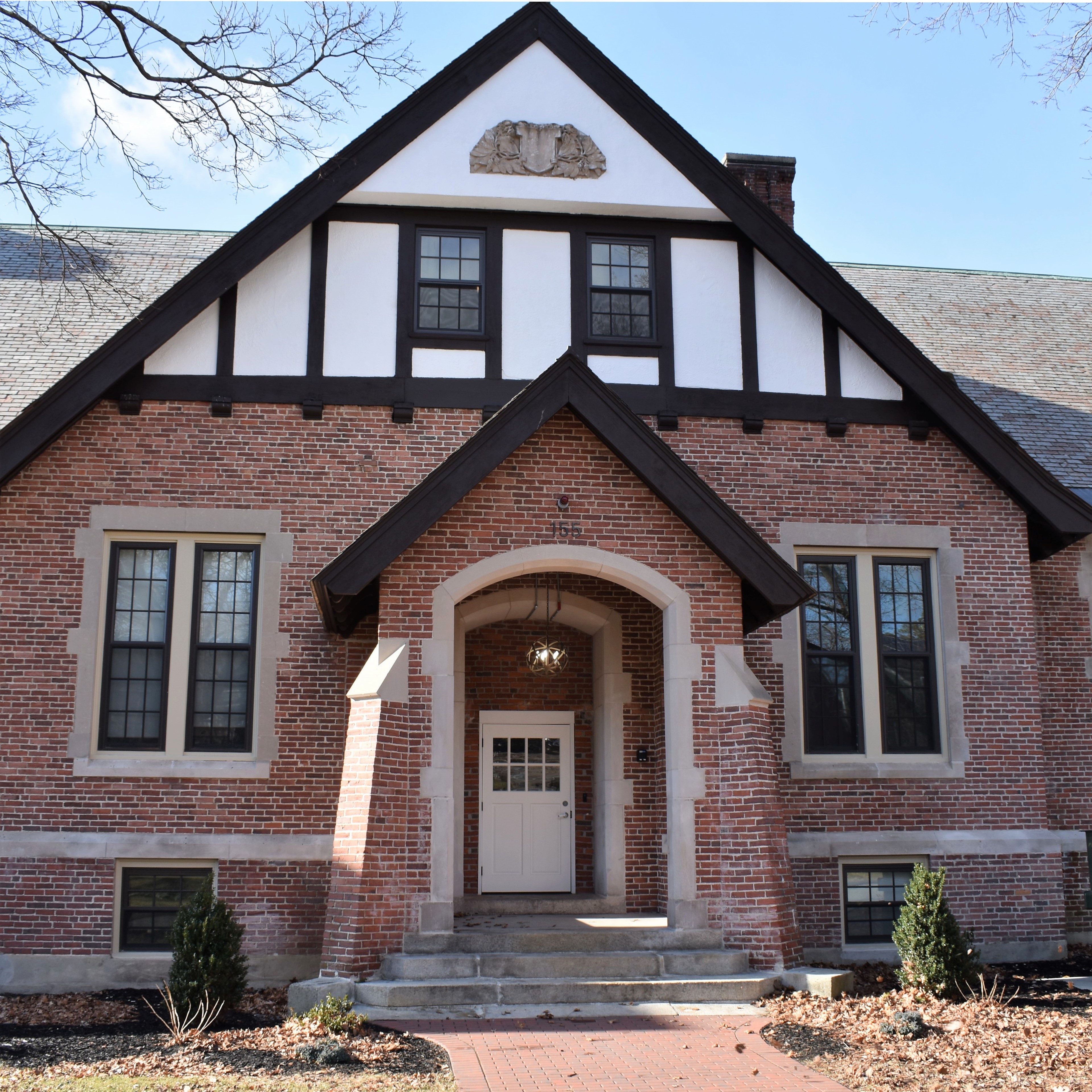History

In the beginning
 Completed in 1924, the Tudor Revival style Indian Hill School was built to serve the adjacent North Village, a planned suburban residential community developed during World War I for industrial workers of the Norton Company. The school is a 1½-story red brick building with a fully exposed basement/ground floor set on a concrete foundation, situated on a large, sloping open lot at the corner of Ararat Street and Indian Hill Road.
Completed in 1924, the Tudor Revival style Indian Hill School was built to serve the adjacent North Village, a planned suburban residential community developed during World War I for industrial workers of the Norton Company. The school is a 1½-story red brick building with a fully exposed basement/ground floor set on a concrete foundation, situated on a large, sloping open lot at the corner of Ararat Street and Indian Hill Road.
Originally called the North Worcester School, the Indian Hill School replaced a one-room, wood frame schoolhouse built in 1893 as well as other smaller neighborhood schools in 1923, the first year of the Worcester School Building Program. The building is attributed to the Worcester architectural firm of Fuller & Delano, which had previously designed the earlier schoolhouse that was located very close by on Ararat Street. Fuller & Delano was a local firm established in 1878 and known for its designs of institutional buildings, especially schools and libraries, in the city and other nearby towns. This attribution, however, may not be correct as its date of construction may post-date the firm’s years of existence.
The foundation of the new school building was partially completed by November 1923, with the old school building and several portables (temporary structures for classrooms) serving the area. The new eight-room school is adjacent to the Indian Hill’s North Village, Worcester’s largest planned community of housing for industrial workers (listed in the National Register in 1980). Built for the Norton Company’s employees during WWI, the rapid construction of the residential area undoubtedly taxed the capacity of the small neighborhood schools. But the situation was prevalent throughout Worcester at this time, prompting an ambitious, decade-long school building program that added a number of larger new school buildings and additions to existing school buildings.
 During this time, the City built over ten new grammar schools and ten new additions to existing school buildings to accommodate the growing numbers of schoolchildren. The program helped solve the problem of an acute shortage of space in the schools, which had necessitated the use of portables and a significant number of children (6,000 in 1923) who were on a part-time schedule. The new schools and additions built during this period reflect the City’s goal to achieve economies of scale by constructing larger schools to serve a wider geographic area, unlike the earlier policy of building smaller neighborhood schools. Their plans reflected state and national standards and modern features including gymnasiums, auditoriums, and large playgrounds and first floor bathrooms. Schools in the program besides the Indian Hill School were the Nelson Place School, Adams Street School, and Elizabeth Street School.
During this time, the City built over ten new grammar schools and ten new additions to existing school buildings to accommodate the growing numbers of schoolchildren. The program helped solve the problem of an acute shortage of space in the schools, which had necessitated the use of portables and a significant number of children (6,000 in 1923) who were on a part-time schedule. The new schools and additions built during this period reflect the City’s goal to achieve economies of scale by constructing larger schools to serve a wider geographic area, unlike the earlier policy of building smaller neighborhood schools. Their plans reflected state and national standards and modern features including gymnasiums, auditoriums, and large playgrounds and first floor bathrooms. Schools in the program besides the Indian Hill School were the Nelson Place School, Adams Street School, and Elizabeth Street School.
The Indian Hill School was originally called the North Worcester School, the name of the 1893 schoolhouse it replaced. By 1927, the school had been re-named for the neighborhood that it served. The school continued its service to the community for a number of decades; even in the late 1940s it was ranked highly for its condition and functionality. By 1948, when a study of school conditions and capacity was completed, the building held 184 students, with a future capacity of 260 students considered possible in the unfinished basement and second floor.
Today
 When purchased in 2017, the building had been vacant and neglected for over 10 years. After careful restoration and redevelopment, the building has been repurposed and now hosts 23 loft-style apartments, featuring modern amenities such as luxury kitchens, with granite counter tops and stainless steel appliances, in-unit laundry rooms, central A/C, integrated security system, internet and cable TVs.
When purchased in 2017, the building had been vacant and neglected for over 10 years. After careful restoration and redevelopment, the building has been repurposed and now hosts 23 loft-style apartments, featuring modern amenities such as luxury kitchens, with granite counter tops and stainless steel appliances, in-unit laundry rooms, central A/C, integrated security system, internet and cable TVs.
amenities
The development has been awarded state and federal tax credits for its attention in restoring and preseving the historic architectural elements and character of the building and it is now listed on the National Register of Historic Places.